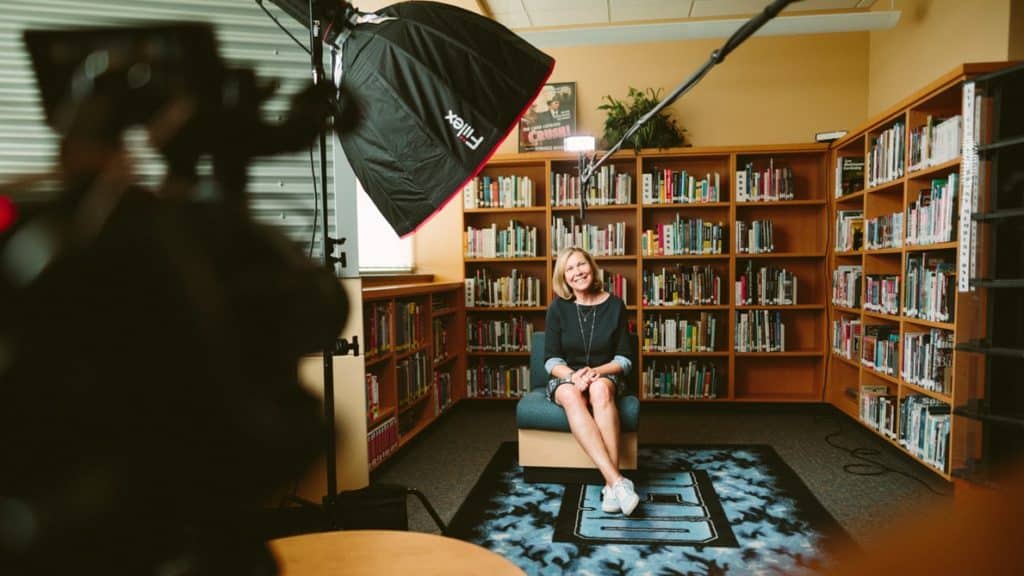
In our previous blog we had a look at the various methods you can use to learn your script in preparation for recording day. In this blog we take you one step further into how to deliver your message with clarity, resonance and impact to your audience when creating videos.
Once you feel confident with your script, it’s time to prepare for your recording. This entails taking various elements into consideration, all of which contribute to the creation of a professional and impactful video and message. These include:
Several script readings
By this point in the video journey, your script should be finalised and ready for a read through. Only when reading it aloud will you be able to see if it flows from one sentence to the next. If there are parts that sound forced or awkward, now is the ideal time to make any amendments needed. This process also helps to memorise the script as the more you edit it, the more thoroughly you get to know it.
Speak in a language your audience understands
When speaking in the video, keep the tone simple and conversational. It doesn’t matter what industry you work in, your audience wants to hear you speaking like a human, not a robot. That’s why it’s important to keep the tone simple and conversational – don’t use any jargon, buzzwords or meaningless waffle.
Inject volume and energy
When speaking, ensure that is clear, loud and energetic. This doesn’t mean acting like a loud salesperson, it simply means conveying your enthusiasm to viewers. Positivity, a clear voice, inflections and emphasis all work to create a lively video which is more interesting and appealing to watch.
Non-verbal communication
Appropriate facial expressions and hand gestures are critical to your performance. They help to amplify your words, stress important points and show that you are passionate about what you’re saying.
One person only
Even though many people will view your video across various mediums, it’s vital that when you talk, you envision that you are speaking to one person only. This helps you to connect with each individual viewer as they feel you’re talking directly to them.
And now for the teleprompter
Many video shoots utilise a teleprompter. A teleprompter can help you feel prepared and ensures that none of the important points of your message get left out.
A teleprompter is basically a monitor designed to make it look like the presenter is talking directly to the audience. Hiring one can be costly, so if budget is a concern you can create a makeshift teleprompter with a large TV or monitor (and a connected laptop that transmits the script onto the larger screen).
Whilst the idea of a teleprompter might sound great, the reality is they are difficult to use as they tend to make the presenter sound stiff and like they’re reading off a screen, rather than speaking directly to the viewer.
However if the idea of a teleprompter appeals, here are four tips to help you create a more natural and authentic video when using this tool:
Outline your script
Turn your script into bullet points instead of using the entire script. Fewer words to scroll through on a teleprompter is better especially if you’ve never used one.
Don’t read
People don’t want to be read to so avoid looking and sounding like this at all costs as it’s boring for the viewer. By outlining the script, you can reference the important information and use your words to flesh out the rest of the information, which is more natural and authentic on camera.
Set the pace
A teleprompter should follow your pace, not the other way around. When you slow down, the prompter’s scroll should slow down and vice versa. Practice in advance so you can get familiar with the flow and be in sync. Also make sure that you’re comfortable with font size and panel height, which can be adjusted as needed.
Maintain eye contact
The magic of the teleprompter is that it enables you to look directly into the camera lens, creating the illusion of eye contact with your audience. Take full advantage of this by not looking away. Your continuous gaze really does engage your audience. Eye movements away from the camera can make you look a little bit ‘shifty’.
Learning and preparation aside, teleprompter or no teleprompter, there are two main factors that contribute to the success of any videos you produce and they are:
Smile!!!
Don’t forget to smile! It is the simplest way to connect with your audience and it must be present at least at the start and end of your video. The subject matter of your video will determine whether it’s acceptable to smile throughout the entire video (eg discussing death and funerals requires a more sombre presentation than a general business website welcome video) – you will need to gauge the topic and your audience accordingly.
And last but not least…practice, practice and more practice!
There’s no substitute for practice. The more you practice, the more you’ll put meaning to the words. The more polished your script will be. And the more confident you will feel. Helping to create an authentic, appealing and interesting video for your audience.
Let’s take a look!
Below are some ideal reel (get it?) examples of effective videos:
And here are some more you can check out!
Now that you have some effective tools to help you learn your script, it’s time for the next step: preparing to record your video!
In the meantime, we hope to see you through our lens soon!
Paul @ PaulsProductions
02 9114 9444

